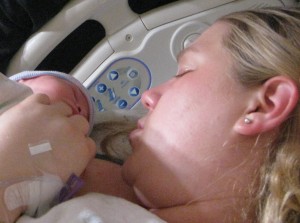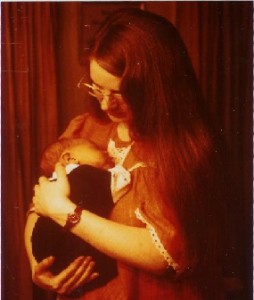To Touch, To Feel
“Touch comes before sight, before speech. It is the first language, and the last, and it always tells the truth.”
–Margaret Atwood
How are you feeling today? Have you ever thought about what that really means? It’s interesting that to “feel” can not only mean to “touch,” but also refers to that inner sense of well-being—the two meanings capture not only the sensation of the external world, but also the sensation of the internal world within each of us.
Think of all the phrases we use every day that refer in some way to at least one of these meanings: a heart-felt gesture, reach out and touch, a touching story, a little touched in the head, feeling great—or poorly, lose touch with reality…. All of these idioms really seem to refer to some combination of that internal and external sensation we call “touch.”
We know touch has magical powers. Scientists have demonstrated that a tiny preemie who is held skin-to-skin against his mother’s chest will stabilize breathing, heart rate, and even grow better. And we now encourage all moms—not just the moms of those tiny babies born too soon—to hold their babies skin-to- skin. Not only does this encourage and develop the breastfeeding relationship by providing easy access, it gives the mother the opportunity to really get to know her newborn—to be able to recognize the subtle cues that tell her that her baby is content, hungry, tired, etc.
And maybe I have this all wrong. It’s not that the preemie held skin-to-skin grows better or that his heart rate and breathing are more stable—maybe these are the standard against which not experiencing skin-to-skin should be compared. This mirrors the shift in language in breastfeeding first popularized by Diane Wiessinger, suggesting that rather than referring to the benefits of breastfeeding, we should speak in terms of the risks of not breastfeeding. So instead of saying that breastfed babies are healthier, we should say that babies who aren’t breastfed are more likely to be less healthy. Breastfeeding—like skin-to-skin—is expected to be the biological norm, and thus the gold standard.
Touching—and allowing oneself to be touched—is an intimate gift. When we allow others to come into our personal space and touch us, whether physically or emotionally—we are granting them access to our innermost being. As adults, we guard our personal space and unconsciously (or not) hold all but our most trusted friends and family at arm’s length. We choose when we are ready to bring them into our space close enough for a hug, a kiss, or a warm embrace. Opening our “force field” around us is our gift to others.
Maybe this is at the heart of a baby’s stranger anxiety. For the first few months, a baby is relatively happy to see and be held by other-than-Mom (or Dad). There are still very clear indications that he senses a relative security in a parent’s arms, but new people don’t necessarily evoke a fear reaction. Somewhere around the middle of the first year, however, the baby—perhaps becoming more self-aware—begins showing signs of anxiety, distrust, and even fear towards unfamiliar faces.
Babies are just so cute! They draw people into their personal space like magnets. And they reward us with adorable smiles, and, if we are lucky, outreached arms to signal “ready to be held.” Those signals can take a while, but with a little patience, combined with nonverbal cues from Mom or Dad that “this person is okay,” the result is worth the wait!
Maybe touch isn’t magical after all. Magic implies some out-of-the-ordinary experience beyond the realm of scientific principles. But if babies are supposed to be held close, and they respond biologically—as well as emotionally—to that body contact, then it really isn’t magic. It’s just normal, expected, pre-programmed behavior. The biologist in me believes this.
The mother—and now, grandmother—in me, however, feels that sense of magic and is deeply touched by it.
In the sheltered simplicity of the first days after a baby is born, one sees again the magical closed circle, the miraculous sense of two people existing only for each other.
-Anne Morrow Lindbergh
© Melissa Clark Vickers 2013 (text and pictures)
Back to Home Page


December 10th, 2013 at 10:11 pm
Skin to skin contact is vital for all preterm ,term and post term babies. Its natural care. It reduces deaths. But the commercial touch hurts me. When industries promote oil,powder and lotions as accompaniments of touch therapy it becomes perversion.
K.P.Kushwaha
December 10th, 2013 at 10:26 pm
Hi, Komal
Yes, the oil, powder, and lotion just seems to be a barrier to skin-to-skin, doesn’t it? And it changes how the baby feels and smells. It would seem that many of these concoctions are just yet another way of trying to make money on something that requires nothing more than Mom (or Dad!) and baby. It never ceases to amaze me how many baby products line the store shelves that are unnecessary at best, and harmful at worst.